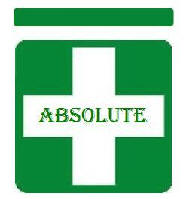 Absolute Safety and engineering
Absolute Safety and engineering
 Absolute Safety and engineering
Absolute Safety and engineering
| Home | Services | Engineering | Accessories | Projects | Contact us |
Recall... News from Work-Place Safety & Health Council

30 Nov, 2010, Ref: 1011077
![]()
WSH Alert - 2 Workers Fell from Height while Climbing Rope Ladder of Marine Vessel
Incident
In this incident, one worker was killed and another fractured his leg when they fell from a marine vessel's jacobís ladder. Preliminary investigations indicated that the rope ladder snapped while both workers were on the same ladder at the same time. This caused a worker to fall onto the deck of a bunker craft berthed next to the vessel, while the other fell into the sea.

Figure 1: Both workers fell from the rope ladder when it snapped
Recommendations*
1. Conduct risk assessment: Proper risk assessment must be carried out by experienced and knowledgeable persons before any work is started. Through risk assessment, employers and workers can identify hazards and take appropriate actions to eliminate workplace hazard or reduce the risks involved. Control measures and safe work procedures must be established, communicated and implemented to ensure the safety and health of the workers. In this case, one of the key control measures would be to ensure the integrity of the rope ladder through an appropriate maintenance regime. The condition of the rope ladder should also be carefully inspected for any material defect and/or sign of deterioration before use.
2. Establish workplace safety and health management programme and safe work procedures: Employers should establish and implement a safety and health management system with proper control measures and appropriate safe work procedures (e.g. ensuring that there is no one else on the ladder before using it). The safe work procedures must be clearly communicated to all levels of personnel via channels such as training courses or daily toolbox meetings. It is also important to ensure that the safe work procedures are adhered to not only by employees but also by contractors and sub-contractors to better manage the safety and health of all workers at the workplace.
3. Develop and implement a rope ladder management program: Rope ladders, particularly those found on sea bound vessels and frequently exposed to the elements, should be subjected to a regular inspection and maintenance regime where each rope ladder is checked for signs of material defect and/or deterioration at periodic intervals (e.g. monthly). Only rope ladders that are in good condition, of good construction, sound material and adequate strength may be deployed for day-to-day use.
4. Ensure proper training and supervision: A supervisor should oversee the workers and ensure that they adhere to the recommended guidelines for safe boarding of a vessel via rope ladder e.g. by using the appropriate personal protective equipment (safety helmet with chin strap, life jacket, gloves with good grip, tight fitting footwear) and allowing only one worker on the ladder at a time (to prevent overloading the ladder). Only authorised persons who have completed training on procedure for safe embarkation and disembarkation of vessels should be allowed on board the vessel. Workers who perform unsafe acts and do not comply with the safe work procedures should be counselled, and if need be, appropriately disciplined.